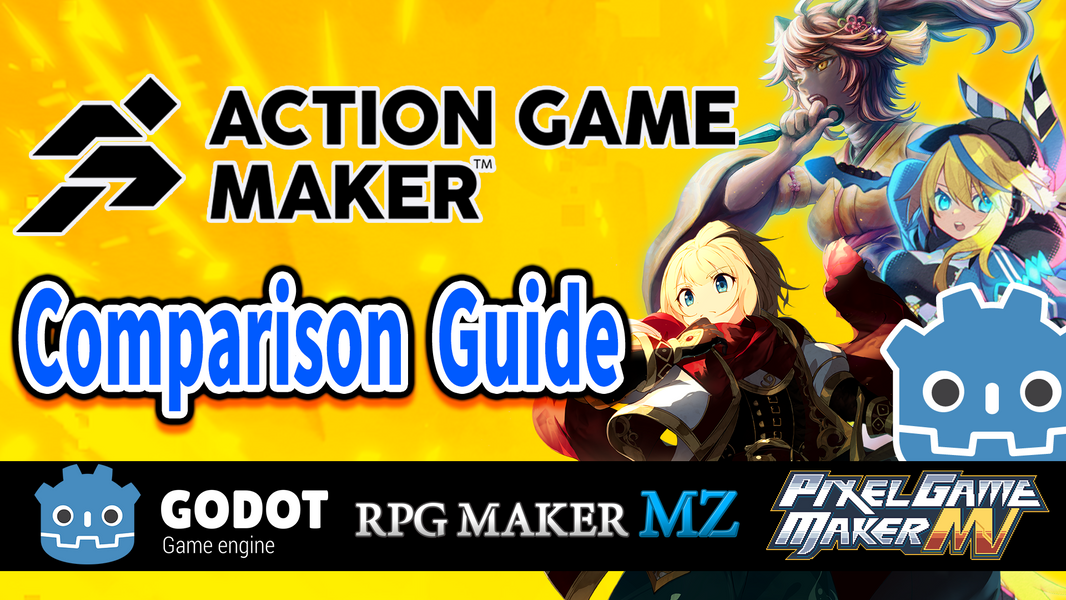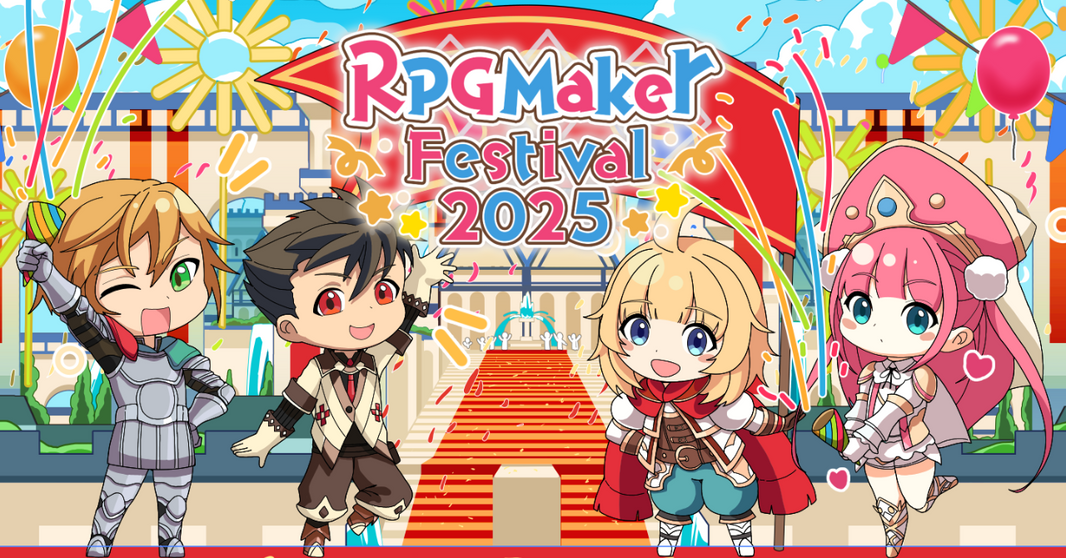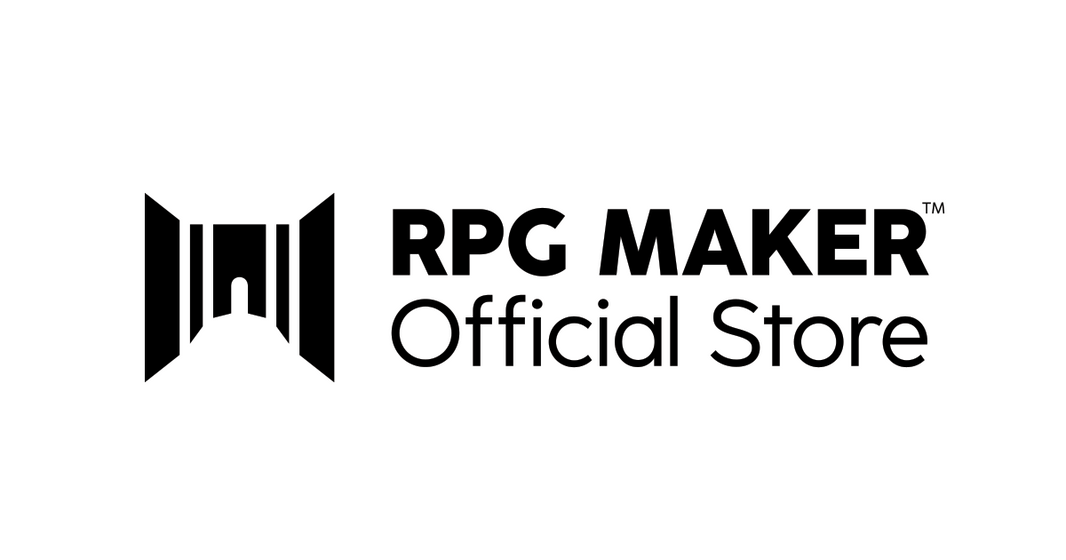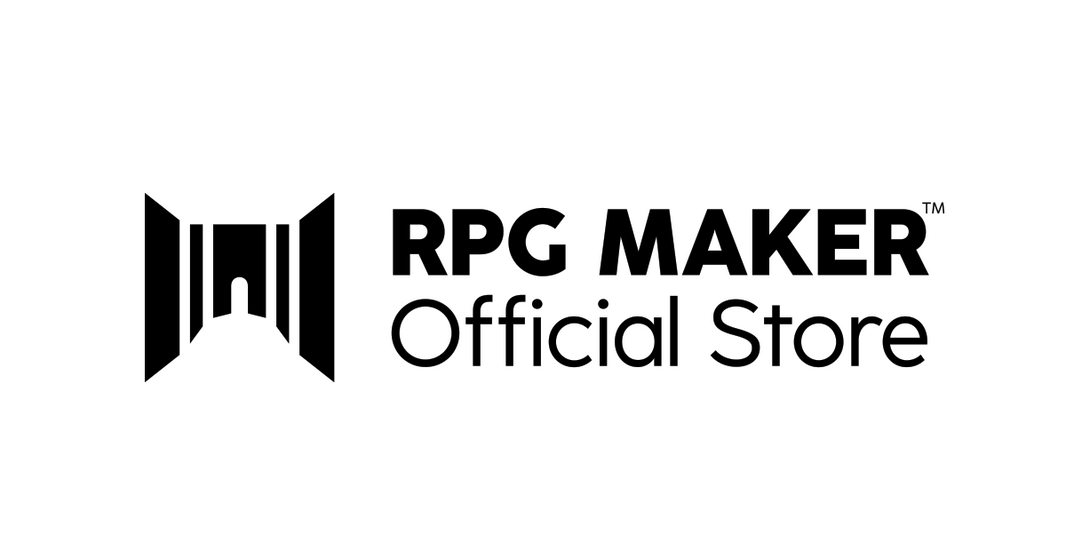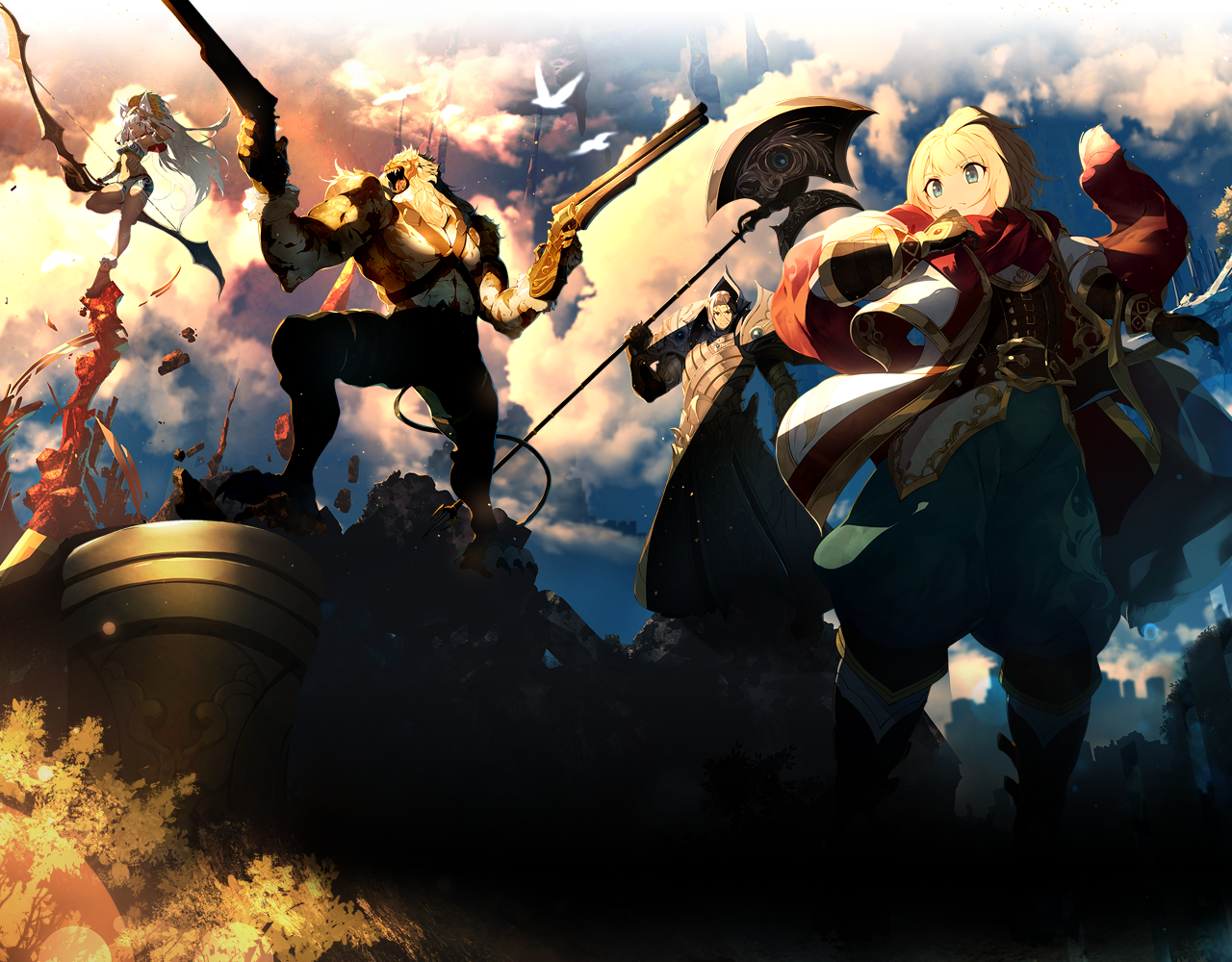
Thinking about ACTION GAME MAKER? But you've heard good things about RPG Maker too! This guide is designed to help you decide which of the Maker series of toolkits is for you!
This guide is looking at ACTION GAME MAKER and what makes it different from the RPG Maker series of tools.
Introducing the Action Game Maker Series
ACTION GAME MAKER is the 3rd entry in the Action Game Maker series.

The first entry, called IG Maker in English, was released back in 2009! As a companion to RPG Maker, it was designed to simplify the creation of action games. It included the ability to make platformers, action RPGs, and even scrolling shooters with Flash and Xbox 360 output.
![]()
The 2nd entry, Pixel Game Maker MV, first came to market in 2018. With an improved node-based visual scripting similar (based on what is called a finite state machine or FSM), it enabled an even wider variety of games than its predecessor could handle. It also was the first Maker series product to enable native Nintendo Switch output. Action, fighting, puzzle, RPGs, and many other genres: more than 60 different titles have been released on the Switch (as of July, 2025; Switch porting closed in March, 2025).

ACTION GAME MAKER is the third generation entry in the series, and was released in June, 2025. The first Maker tool to utilize the Godot Engine, it possesses some of the most advanced 2D technology across all game engines, including Unity. This enables the creation of the most advanced titles yet in the Action Game Maker series, giving users the most creative freedom possible. It also enables HTML5 and Android outputs, with Linux, MacOS/iOS, and Nintendo Switch support coming in the future.
Choosing The Right Engine
The following table takes a look at the features of ACTION GAME MAKER, the older Pixel Game Maker MV, and RPG Maker MZ. Note that RPG Maker MZ does support the capability to heavily modify it via the use of programming to enable features similar to the other engines, but those cases are excluded from this comparison because we are focusing on the non-programming aspects of these tools for this particular guide.
|
ACTION GAME MAKER |
Pixel Game Maker MV |
RPG Maker MZ |
|
|
Supported Game Genres *1 |
Unrestricted |
Unrestricted |
RPG/ADV/Action RPG |
|
Supported Camera Types |
Top-Down/Side View/Isometric |
Top-Down/Side View |
Top-Down |
|
Visual Script Type |
Node-based FSM |
Node-based FSM |
List |
|
Editor UI *2 |
Multitask focused (Modeless) |
Single Task focused (Modal UI) |
Single Task focused (Modal UI) |
|
FPS |
Unrestricted |
60fps/30fps |
60fps |
|
2D/3D |
2D Only |
2D Only |
2D Only |
|
Dynamic Light & Shadows |
Yes |
No |
No |
|
Custom Shader Support |
Yes (GDSL) |
No |
No |
|
Collision Type |
Collision-based |
Collision-based |
Tile-based |
|
Local Multiplayer |
1-8 |
1-4 |
No |
|
Kinematic Physics on Character *3 |
Yes |
Yes |
No |
|
Supported Exports |
Windows/HTML5/Android |
Windows |
Windows/Mac/HTML5 |
|
Extensibility via Programming *4 |
High |
Low |
High |
*1 Generally speaking, there is no technical limitation, but there are ease of use considerations due to the features provided out-of-box.
*2 A single task-focused (Modal) UI uses separate windows for each task to help users focus on specific actions. A modeless UI is one, like Unity or Photoshop, that displays multiple windows/panels simultaneously in order to make it easier to switch between multiple actions quickly. The modeless UI is generally considered more efficient, but has a steeper learning curve, as it is more information rich.
*3 RPG Maker does not support the use of kinematic physics when a character jumps/falls or moves as movement is based on tiles. The Action Game Maker series supports collision-based physics.
*4 ACTION GAME MAKER supports Godot Engine's GDScript system in full. RPG Maker MZ allows free editing of the engine and heavy customization via plugins. Pixel Game Maker MV can only be edited via the provided API system.
Which One Is Right For Me?
RPG Maker MZ
-
I want to make a turn-based experience, like a console-style RPG or a text adventure game.
-
Instead of making gameplay, I want to build a world or focus on creating the story.
The greatest attraction of RPG Maker is its accessibility to people at all skill levels.Even people getting their first taste of game development and with no knowledge of programming can make an RPG or an adventure game.
The preset dialogue, inventory, and database functions allow for fast running starts focused on creating the story and not the game systems.
The big limit is of course for those that don’t want to make a RPG or adventure game. You will need to involve programming to get beyond this limitation. Even making changes to the default UI layout requires programming. Even something as simple as unlocking a secret character could involve programming. So while it is possible for people who are OK with learning to code or using lots of plugins won’t need to be bothered by these limitations, RPG Maker is still best for those who wish to focus on creating their game’s setting, world, and story.
RPG Maker MZ Pros & Cons
Pros: Easy to learn and put to use, including the dialogue system. Lots of existing plugins and guides.
Cons: Difficult to make anything other than RPGs and text-heavy games. Quick to hit the limits of the no-code scripting system.
Pixel Game Maker MV
-
I want to create my own unique gameplay inspired by pre-2000s style retro games
The visual scripting system using in ACTION GAME MAKER is an evolution from the system created for Pixel Game Maker MV (PGMMV), but the PGMMV system is actually quite highly developed in its own right. This is why the title was “Pixel Game Maker”: you really could make any type of pixel game if you were willing to put in the effort.
“Oh, I’d really like to include that feature from that game I played recently in my own game…” PGMMV makes this possible without coding.
With a modal, task-focused UI and a fit-for-purpose animation system, it can be argued that PGMMV is even easier to use than ACTION GAME MAKER. Thanks to frequent sales, PGMMV remains a compelling option for some users.
However, there are some serious limitations. PGMMV is an older tool that lacks many modern graphics functions like customizable shaders or 2D dynamic light and shadows. Additionally the collision system isn’t robust and is easy to break at high speeds. While it is possible to make high resolution games, there is a performance bottleneck, limiting the attraction for those who want to make a high speed action game with extremely responsive controls. Generally this is expected, as PGMMV was intended more for those looking to create more of a retro feel, such as designs more common on classic consoles.
When compared to a tool like RPG Maker, it just isn’t as quick to get started as there’s not as many presets allowing you to get something up and running immediately. There are plenty of sample projects to learn with, but generally speaking each game needs to be made from scratch every time. Indeed, there isn’t even a pre-made dialogue system or inventory system that can be reused; every game system must be made from scratch - even the UI.
Pixel Game Maker MV Pros & Cons
Pros: Able to make your whole game, from the characters to the UI, without programming. Uses a modal UI that helps make development very straightforward.
Cons: Compared to RPG Maker, there’s a lot less guides, information, and sample assets available. Not possible to use the latest in display techniques or resolutions effectively. Even with the addition of programming, there’s still major limitations on extensibility.
ACTION GAME MAKER
-
I want to make my own original gameplay without any programming, but I want the capability of a modern game engine.
ACTION GAME MAKER’s greatest advantage is that it provides easy access to the 2D functions of Godot Engine, which is competitive with other engines such as Unity. Modern graphics functions, character structures, 2D bone animations, and more: it has everything a 2D game developer needs. Indeed, any 2D game that can be made can be made with ACTION GAME MAKER, though programming might be needed in some cases.
Specifically looking at the visual scripting system, most of Godot Engine’s 2D capabilities can be used. If the function runs off of properties, then it should be usable from the visual script. Compared to PGMMV, there’s a lot more power accessible directly from the visual scripting system.
However, this power does have a cost. In order to access these deep Godot functions the UI must also match Godot’s use of a modeless UI. While this does lead to faster development for those who learn the UI, it does increase the learning cost and can even be a less efficient UX in some cases.
Compared to RPG Maker, the barrier to entry is of course much higher but in return the capabilities are also greatly increased giving you much more freedom as a developer to make something that is uniquely your own.
ACTION GAME MAKER Pros & Cons
Pros: Able to make your whole game, from the characters to the UI, without programming. Able to use the latest graphics techniques. Highly extensible via programming ensuring any type of gameplay can be made.
Cons: Compared to RPG Maker, there’s a lot less guides, information, and sample assets available. Some people can find the modeless UI daunting to learn.
Comparison with Godot Engine
In the above sections, we have sung many praises of the Godot Engine that powers ACTION GAME MAKER. However, why would someone consider the cost of purchasing ACTION GAME MAKER when the standard Godot Engine is completely free open source software?
Indeed, using the free Godot Engine with free plugins would be the cheapest option for any aspiring game developer. So let’s take a look at how ACTION GAME MAKER provides its own value separate from Godot Engine.
FSM (Finite State Machine) Visual Scripting
The most obvious is the addition of the FSM-based visual scripting system. While it originates from RPG Maker’s event editor, it is designed to be used by anyone regardless of their familiarity level with programming concepts. While visually there are similarities, the reality is that there are significant differences between a system like Unreal’s flow-based Blueprints and ACTION GAME MAKER’s FSM-based visual scripting system.
Flow-based Visual Scripting
This type of visual scripting is very low level style, designed more for processing variables and performing math operations. If you turned the program code into a flow chart, this is basically what would be the result. It’s a very flexible and powerful style, but it requires thinking similarly to a programmer and understanding how the engine functions at a deep level. This essentially means this method is best used by a programmer. Systems like the old Godot 3 visual script, Unreal Blueprints, and most other visual scripting systems are based around this model.
As an example of a flow-based scripting system, consider what it takes to within the engine to actually trigger a falling icicle when the player is within some distance (say, 300 units). It might look like this:
Get Player Character→ Get Location(Self) → Get Location(Player)→ Vector Distance(Self, Player)→ Branch <= 300→ (IF TRUE) Set Physics = true → Set Collision = Enabled
While this is a theoretical sample, it should highlight how one needs to think closer to how a programmer might need to think when implementing a system from scratch.
FSM Visual Scripting in ACTION GAME MAKER
ACTION GAME MAKER’s visual scripting system is based on the finite state machine (FSM) concept, which is about controlling the status (state) of an object. Each action in a game, such as “Idle” or “Walk” can be thought of as a state, and you link states together via conditions. These “actions” and “conditions” still have to be programmed the first time, which is why the development of such a system is very difficult to do and why not many others do it. However, once the system is up and running then it becomes possible for users of this system to take advantage of it without actually needing to learn the ins-and-outs of programming.


The end result is that creating a system that requires no programming and can also be used by those who don’t think like a programmer is challenging to develop and thus there aren’t many examples of it. Additionally, creating a system that doesn’t just make one type of game (say, a platformer) and can be used to make puzzle games or RPGs or anything else significantly increases the development cost, and there’s even less multi-purpose no-code systems.
But let it be side that while tools such as ours can be used without programming knowledge to have a no-code experience, having some ability to think in event sequences and a bit like a programmer is still a useful skill to have in order to get the most out of ACTION GAME MAKER and similar such tools.
For example, to make an icicle that falls when the player is nearby requires thinking of the various actions that need to happen: “fall when the character is X pixels away”, “switch to the falling state”, “when in the falling state, the icicle can move downwards” , “if collide with the ground, destroy the icicle”, “stop the icicle animation on destruction”, “destroy the icicle game object when the destruction animation finishes”. It’s through this sequence of events (states) that a game will be built out of. This kind of thinking is needed by all kinds of roles on a game development team, such as by event planners, game designers, sometimes even the game director. This is because these roles need to write out game logic and concepts in such a way that they can be understood by the programmers, and a FSM-based scripting system is one way for non-programmers to train how to more effectively communicate with technical team members.
Visual Scripting & Databases
Godot does not have a database function included by default, and so users would need to create their own or use a plug-in (which wouldn’t then be aware of the visual scripting system). But by providing both functions out of the box, we can ensure that the database can be fully accessed by the visual scripting system.
Visual Scripting & Scene Transitions
Once again, Godot doesn’t provide a default or templated method for connecting scenes together in order to connect up the different parts of your game. Such a structure must be programmed in from scratch for each project or a plug-in must be added. Again, ACTION GAME MAKER provides this function out of the box, which also means it can take advantage of the visual scripting and database structure to ensure your game flow can be quick and easy to implement.
Multi-purpose Audio and Video Assets
ACTION GAME MAKER includes more than 400 different audio assets (46 music tracks, 263 sound effects, and 105 voice lines) with purchase.
And for side scrolling projects, 9 different 2D bone animation characters with more than 200 different animations are also included. To top it off, another 400 static 2D assets (tiles, doodads, etc.) are also included..
So, what actually is different from Godot Engine?
The combo of a rare and high quality visual scripting system along enough assets to make a complete game? For non-programmers, an ACTION GAME MAKER purchase should represent a compelling value proposition, as well as a great opportunity to learn the Godot Engine at a level that represents your current skillset without closing future doors.
Godot Engine
-
I am comfortable with programming.
-
I want to learn to write code.
-
I don’t mind the complexity of working with deep configuration and using lots of plugins or extensions.
If you fit the above descriptors, then just go ahead and jump right in with Godot Engine; ACTION GAME MAKER might not be able to provide enough value to satisfy your needs at the skill level you have.
However, for the learner or for those wanting to explore the possibilities of an FSM scripting system combined with programming or are just looking for a fast prototyping tool, you may still wish to consider ACTION GAME MAKER!




